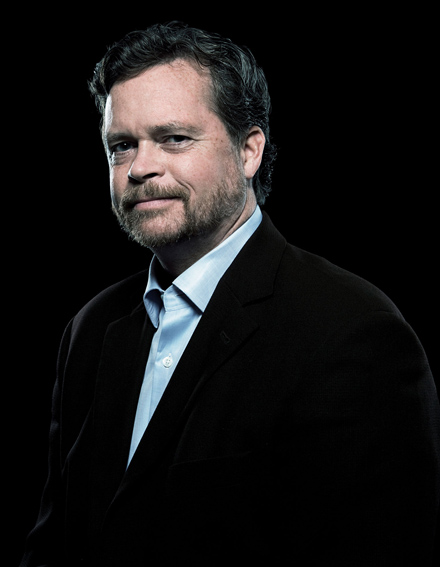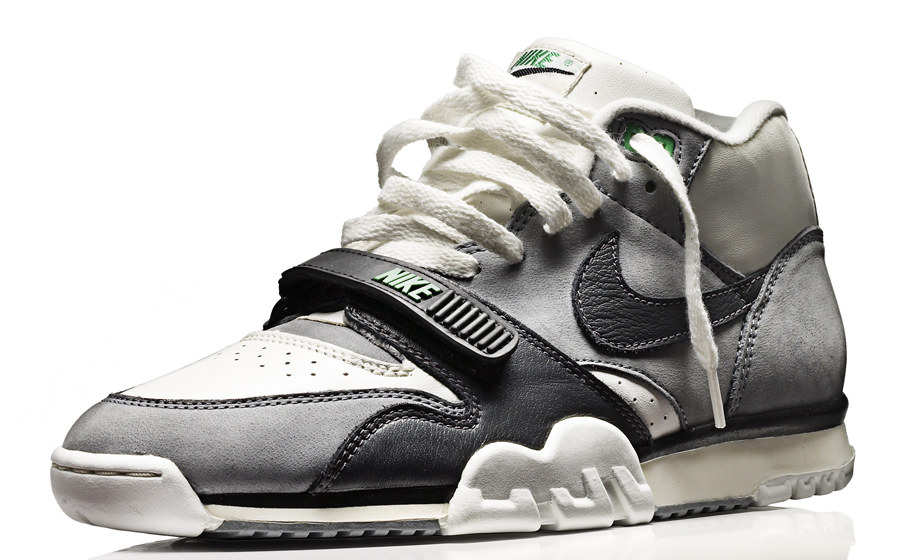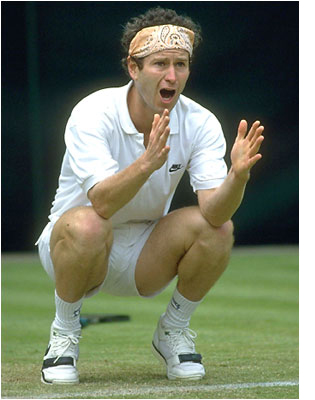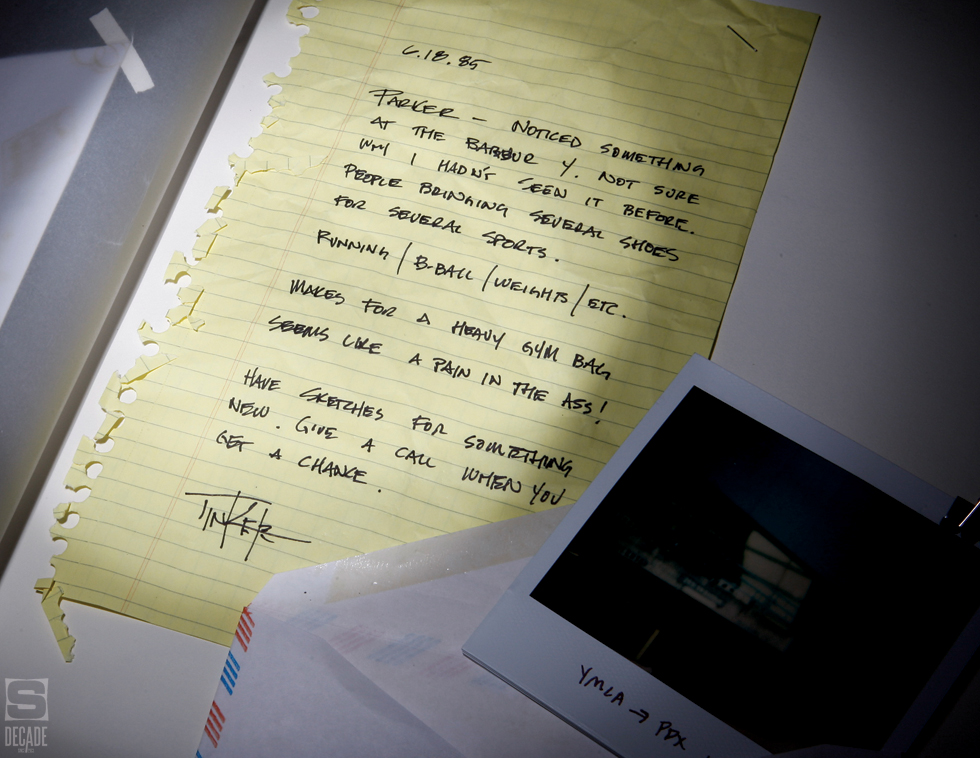words & interview // Zac Dubasik & Nick DePaula
as published in Issue 45 of Sole Collector Magazine, the 10th Anniversary Issue
It only makes sense that the CEO of an innovative company like Nike would have experience in more than just pushing paper. Mark Parker, who took over the title of CEO in 2006, has been with the company for upwards of 35 years and has proved his expertise on not only the administrative end, but the product side of things as well.
It was that product side of things that Parker was engaged with at the time that cross training was born at Nike. Along with his friend and collaborator Tinker Hatfield, Parker helped see the original Air Trainer 1’s development through to the final product. Their combined efforts and vision led to not only the first cross training shoe, but the creation of the category itself.
 Ever since, Parker has been helping to push the evolution of Nike. He now oversees the company with a much broader perspective than his R&D days, but that time in product has given him a unique and powerful vision to lead the direction of the brand as a whole. When Sole Collector had the chance to talk to him while celebrating the Training re-launch, we jumped at the opportunity.
Ever since, Parker has been helping to push the evolution of Nike. He now oversees the company with a much broader perspective than his R&D days, but that time in product has given him a unique and powerful vision to lead the direction of the brand as a whole. When Sole Collector had the chance to talk to him while celebrating the Training re-launch, we jumped at the opportunity.
Excerpted from Issue 30 -- Fall 2009:
Sole Collector: What was your initial reaction to the concept of a cross training shoe that Tinker’s YMCA experience inspired?
Mark Parker: Tinker was able to crystallize insights around this concept of multiple-activity footwear. A few years earlier we cooked up something called the GPAS shoe – General Purpose Athletic Shoe. It was a project for the military that came out of the advanced R&D group. We were trying to create a good alternative to the big, heavy boots that soldiers were wearing. But that idea never really got much traction, so we put it on the shelf.
What Tinker was able to do was to bring his own unique insights from his experience and evolve the multi-sport concept in a really compelling and relevant way. His design of the Air Trainer really captured and communicated this whole concept of multi-sport activity. Of course, the world soon came to know that as cross training.
At the same time, we also launched visible Nike Air and the Air Max and Revolution campaign. All of those ideas had a tremendous impact on the trajectory of the company. I think it’s a really great example of how much you can accomplish when you put together a small, highly focused team.
SC: Could you explain your role in the company at the time and the role you played in that shoe coming to life?
MP: I was overseeing footwear R&D when this bubbled up. My time at Nike started as a designer back in Exeter, New Hampshire. I also helped in the start up of our Nike Sport Research Lab where most of the science of Nike happened. Of course, it was fairly primitive by today’s standards, but at the time it was state of the art, especially compared to the moribund practices elsewhere in the shoe industry.
At that time, a few of us looked around and realized we had to be more aggressive at innovation. I was charged with putting together the team and the project list and leading the work that would sort of rattle our cages and the cages in the marketplace. I asked Tinker to take the lead on cross training, and he and I would work together during the design and development process, bouncing ideas back and forth.
SC: With the concept of a Cross Trainer serving as one shoe for multiple sports inherently counter-intuitive to selling more shoes, what was the response from the business category?
MP: Of course there were some people concerned elsewhere in the business. You never want to cannibalize your own products. And it did take some conviction to move through the initial resistance. But the ultimate benefit to the consumers and to the business was that we developed an entirely new category. It didn’t take long for all of us to recognize that we were onto something with tremendous potential. In fact, John McEnroe got wind of the Air Trainer and actually came to us and asked to wear it on the court. That’s the first time an athlete at that level had ever competed in a multi-sport shoe. When things like that start to happen, you know you have a worthy concept. Before you knew it the words “cross training” were a permanent part of the athlete vocabulary. Nothing turns around the doubters like success.
SC: At any point, when the concept was met with resistance, did you worry that it wasn’t the right thing to do?
MP: Never. Tinker and I both knew intuitively that this was the right thing to do. There was never any time where he or I said, “Well, maybe this isn’t the right idea or the right time.” We were very committed from day one.
SC: What do you remember about your travels overseas with Tinker during the development of the shoe?
MP: Tinker and I have traveled all over the world together over the 30 years that we’ve been great friends. I’m a firm believer that traveling is one of the best ways to get to know somebody. That typically involves countless hours on airplanes and in hotels, so we would take that time and spend it sketching out ideas and arguing the merits of different things – technology in running, new music, architecture, artists we had discovered. It could be anything, really.
I remember one night in Korea, it was 2:00 or 3:00 in the morning, and we were hashing out some design changes on the Air Trainer 1. I was cutting out pieces of paper trying to figure out some of the material overlays on the shoe, so I was surrounded with dozens of these little scraps of paper. And I’m cutting away and I look over at Tinker and he’s dead asleep. So I decided to tape all these scraps of paper to him, covered him head to toe. It was great because I could see his subconscious mind working: “Something’s not right … Something’s not right.” Then he woke up and started freaking out, swatting and spinning and picking at the paper like he was covered in spiders. He wasn’t too happy about that, but we both had a good laugh.

SC: Did the success of that project lead to increased confidence in you and Tinker to take more chances moving forward?
MP: I think the Air Trainer reinforced for everybody on the team that our instincts were right. But we never had any doubts, really, and we weren’t looking for validation. We were on a mission. More than for us, it created confidence in other people around the company who began to agree that taking smart chances and going for an idea you believe in is a good way to generate growth opportunities.
SC: At what point do you think Nike Training lost its way, and what contributed to it?
MP: I don’t think that Training lost its way, really. But I do think that we could have done a better job of building on what we created early on. Some of the product after the first few generations started to lose some of its edge. And when you combine that with the demands of getting after new business opportunities, I think we let the wind die down a little bit too much in cross training. And that had an effect on the product. It affected how we communicated about the category. I think some of our best advertising ever – Bo Knows – came out of cross training. One thing I’ve learned in my time at Nike is that if you’re not passionate and committed and fully engaged in your business, in this case cross training, then consumers aren’t going to be engaged either.
 SC: Do you think training for specific sports is the most relevant insight for products given the sports specificity of so many of today’s young athletes, or do you believe that multi-sport training and versatility is still the best insight to build product for this consumer?
SC: Do you think training for specific sports is the most relevant insight for products given the sports specificity of so many of today’s young athletes, or do you believe that multi-sport training and versatility is still the best insight to build product for this consumer?
MP: As a general statement, it’s true that young athletes are focusing on one sport much earlier than in the past. I think you have to do that if you’re going to be competitive. But central to that focus is the concept of training, which is by definition multi-dimensional. You have to work on speed and agility, quickness, strength, endurance, and that’s not something you can achieve simply by doing your sport of choice. Training is vital to how athletes prepare for their season. And even people who aren’t competitive are still involved in a lot of different activities. So there is definitely a demand for product that enables that kind of versatility.
SC: Do you see the category of Training as an opportunity to push advances in technology and innovation?
MP: Absolutely. When you are combining the essence of many different sports into a single product, it’s a real exercise in optimization. You have to be very creative in balancing different types of performance, for example, keeping a shoe stable for side-to-side motion and yet keep it lightweight. Those two things typically work against each other. Same thing with cushioning and stability, or lateral support versus linear efficiency. But when you get it right, you minimize the compromises that are necessary and replace them with versatility. And a lot of those solutions are driven by technology—new materials, new stability technologies. We’re able to do a lot more now than we could even a couple of years ago.
SC: What have been your favorite shoes throughout the history of Nike Training?
MP: The Air Trainer 1 for all the obvious reasons. Great shoe. Classic in every sense. And I like the new Trainer 1, which I think captured the spirit of the original pretty well. I’m a less-is-more person. I prefer simple, elegant designs that perform really well … l like the Free Trainer series. But my favorite trainer is the one we haven’t created yet. I know there’s a lot more room to innovate in Training, and I look forward to the future.

